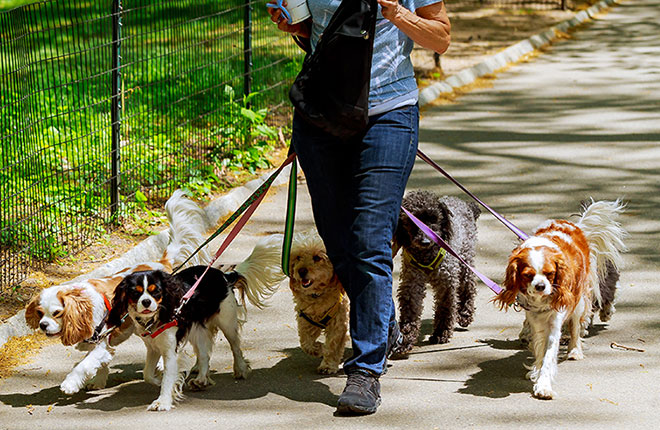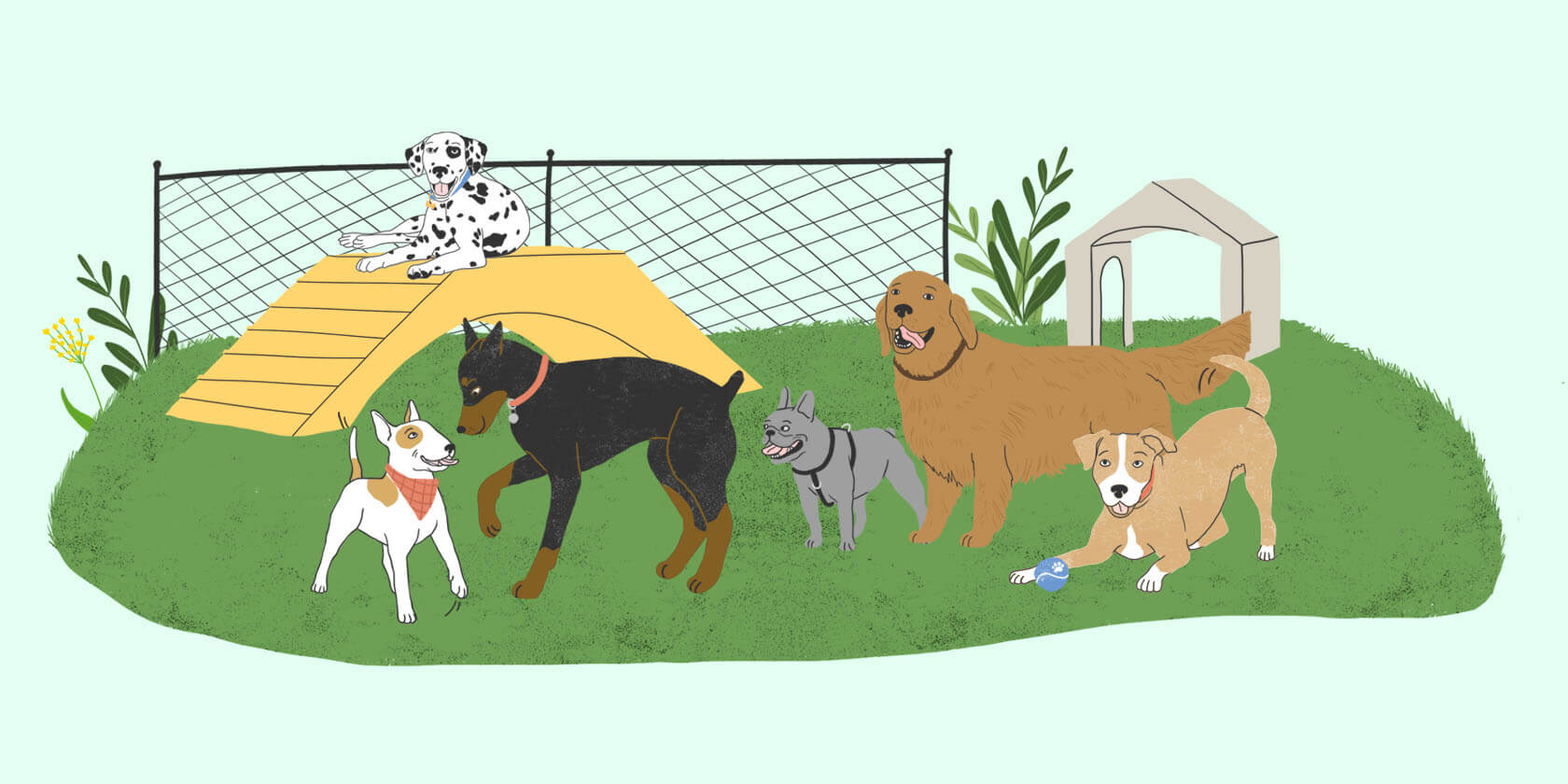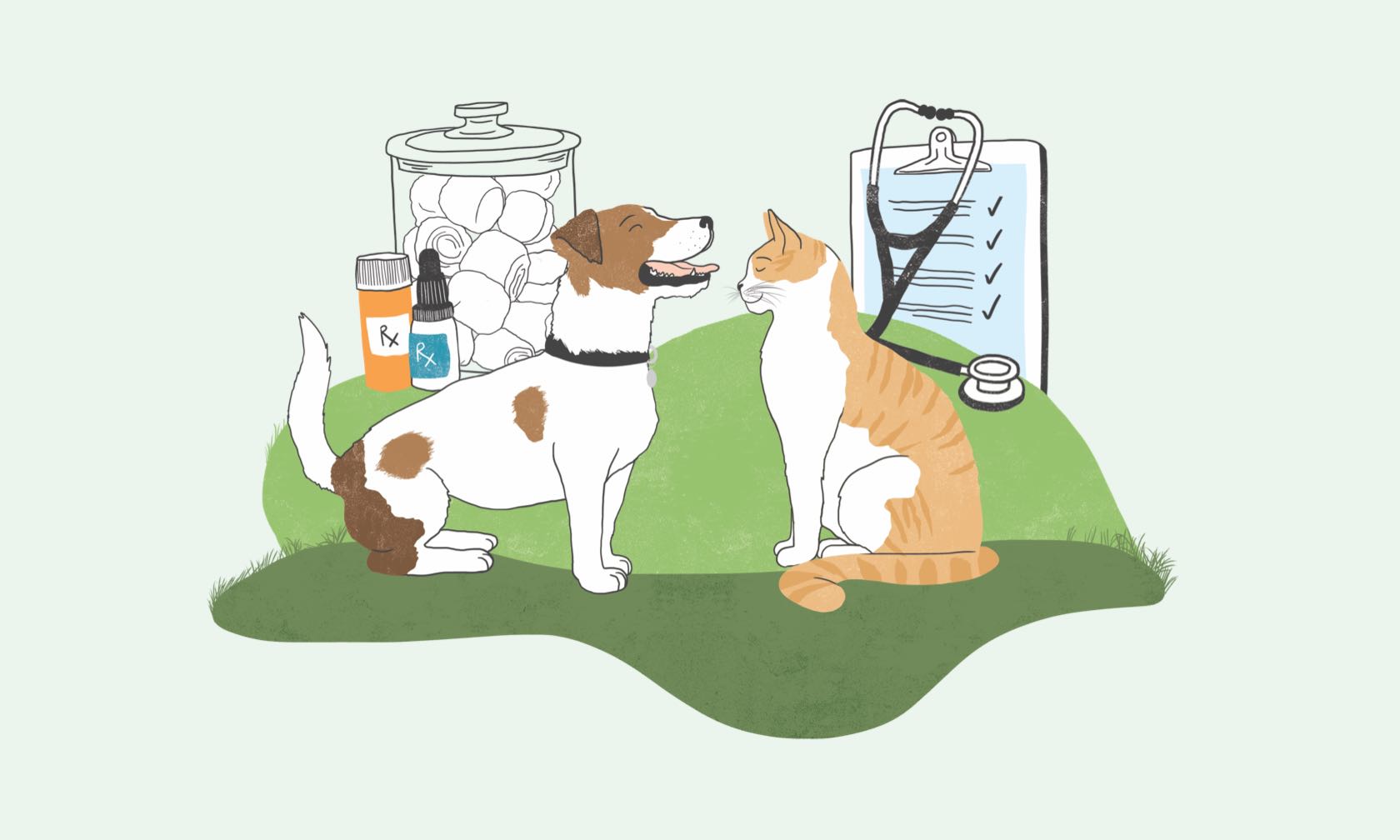Human flu season has arrived, which means you’re trying your best to keep your family healthy and safe. But did you know that your dog can get the flu, too?
What Is Canine Influenza?
Canine influenza, commonly known as the dog flu, is a highly contagious viral infection caused by a specific Type A canine influenza virus (H3N2) for which most dogs have no immunity).1 Though the dog flu has similar symptoms to the human flu, like fever and fatigue, the canine influenza virus is different from the human influenza virus and is not currently known to be contagious to people.
How Do Dogs Get Canine Influenza?
Canine influenza is a highly contagious virus that your dog is most likely to pick up at high-density dog areas such as dog parks, pet stores, boarding kennels, groomers, dog shows, or doggie daycare. The virus can also be brought into your home (on your hands, clothes, and shoes), and transferred to your dog that way. Because of this, it’s important to wash your hands and change clothes before handling your own pet when you’ve come into contact with any potentially sick dogs.
Symptoms of Canine Influenza
As with the flu in humans, the symptoms and severity of the infection may vary from dog to dog, and can last for several weeks. Here are some common symptoms of canine influenza:
- Reduced appetite
- High fever
- Cough
- Runny nose
- Sneezing
- Lethargy
Ways to Help Protect Your Dog from Canine Influenza
Immunizations
The best way to help protect your dog from the flu is to vaccinate them against the virus. The canine influenza vaccine is highly effective at helping to prevent dog flu. Ask your veterinarian about the vaccine at your pet’s next appointment.
Hydration
Help ensure the health and proper function of your dog’s respiratory tract by providing plenty of fresh water to drink and using humidifiers around your home as necessary.
Avoid the Shared Water Bowl
When you’re out for a walk and you see a water bowl on the sidewalk, keep walking! Shared water bowls can harbor bacteria and viruses like canine influenza.
Avoid Sick Dogs
If you encounter a sick dog, don’t let your dog sniff or interact with them. Remember that dogs are most contagious before they even show any signs of illness.1
Make Sure Your Favorite Places Are Clean
Ensure that your favorite places to visit with your dog are properly disinfected to minimize the risk of a flu outbreak.
Do You Suspect Your Dog Has the Flu?
If you suspect your dog has the flu, make an appointment with your veterinarian immediately. While it could be the flu, it could also be kennel cough, pneumonia, or a host of other conditions. Your vet will help you figure it out.
Pro Tip: Once you get to your vet’s practice, call from outside or your car to check in, as the vet may wish to bring your dog straight into an exam room. This helps to prevent infecting the other dogs in the lobby since the dog flu is so contagious.
Because canine influenza is a virus, antibiotics won’t help, but they may be prescribed to prevent or treat a secondary bacterial infection, which can arise during viral infections.
Your veterinarian may recommend supportive care to help your dog recover faster, including:
- Resting
Provide a restful environment and encourage gentle exercise to keep mucus moving. - Eating
Stimulate appetite by wetting food with chicken or beef stock (no onions or garlic, though). - Hydration
Encourage hydration by flavoring their water with stock, adding water to their food, or adding wet food to their diet. - Humidification
Create a humid environment in the bathroom with the shower running or use a humidifier in the room your dog is resting in. - Soft Cotton Balls, Cotton Pads, or Tissue
Dampen these with warm water and use them to wipe away mucus from your dog’s nose.
If you have other pets, you may want to isolate your dog to help prevent the virus from spreading. If you have more than one dog, chances are if one dog has it, your other dogs already do as well. It’s better to err on the side of caution and keep them all separate. Since there’s also a risk of cats catching flu from dogs, it’s best to prevent your cats from snuggling with your sick dog, too.2
Dogs with mild influenza will usually recover on their own and often don’t need antibiotics, but influenza can progress and require hospitalization. Long-term lung complications from the flu may occur in dogs. Make sure to visit your vet early on for diagnosis and follow their instructions for care and monitoring.
ZPC-00187R2
- Canine influenza backgrounder. American Veterinary Medical Association. https://www.avma.org/KB/Resources/Reference/Pages/Canine-Influenza-Backgrounder.aspx. Accessed December 2, 2024.
- Song DS, An DJ, Moon HJ, Yeom MJ, Jeong HY, Jeong WS, et al. Interspecies transmission of the canine influenza H3N2 virus to domestic cats in South Korea, 2010. J Gen Virol. 2011;92:2350–5. 10.1099/vir.0.0335220. https://www.ncbi.nlm.nih.gov/pubmed/21715595. Accessed December 2, 2024.





